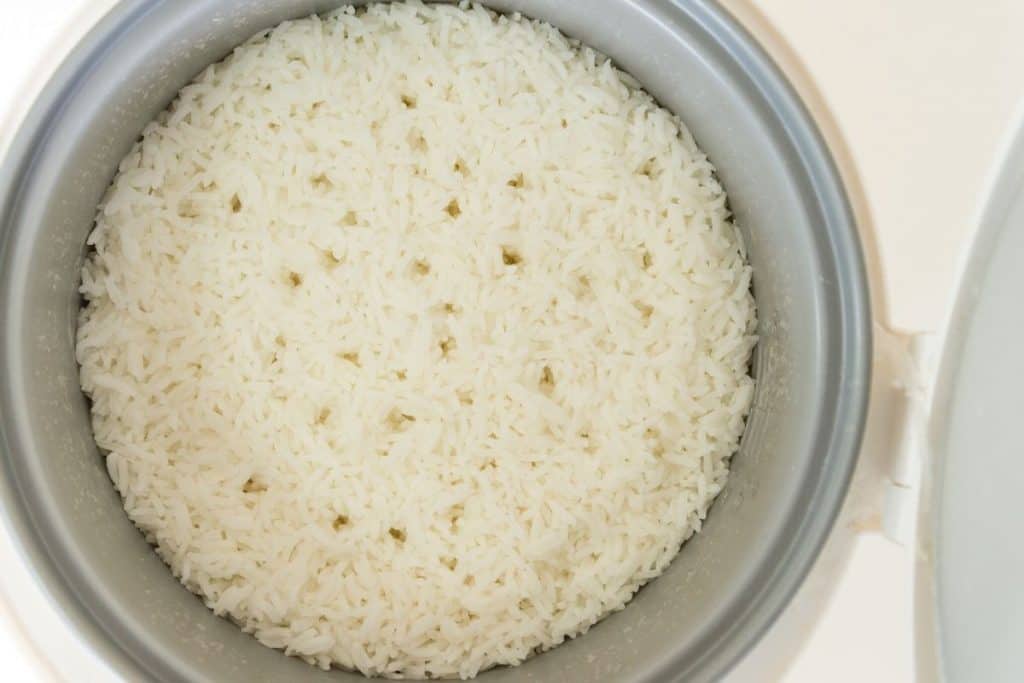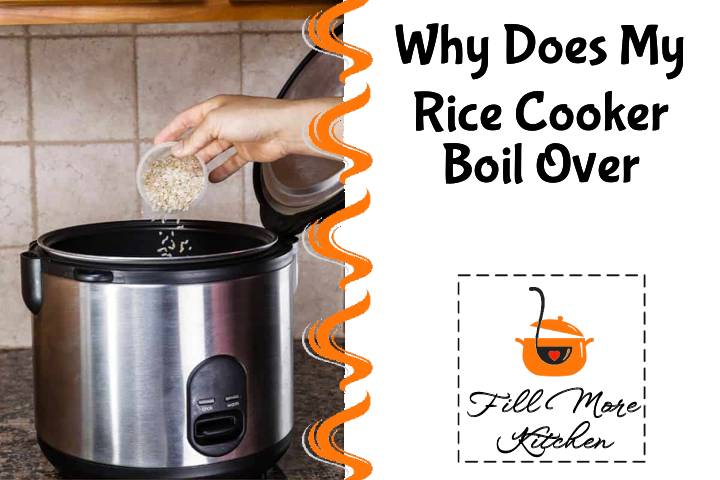Admit it, we’ve all experienced it. While cooking a scrumptious meal, you hear a hissing noise coming from the stove, indicating that water is hitting either the burner or flames, and most likely, your pot is about to boil over.
If you are wondering why your rice cooker boils over, it is because this happens quite often and there are two main reasons for it.
- If you don’t wash the rice, it can become too starchy and cause boiling over in the rice cooker.
- Either water, rice, or both are exceeding the maximum capacity of the rice cooker
Even if you have followed the instructions in the manual, including using the correct measurements and not washing your rice, there may still be something you overlooked that could be causing your rice cooker to boil over.
Wash the Rice
If you bought a rice cooker, it was probably to make cooking rice quick and easy without needing to watch over it constantly. While rice cookers are great, there are certain precautions you need to take to prevent boiling over, and one of the most commonly overlooked steps is washing the rice.
One reason why people skip washing rice is that it takes up a lot of time, which they may not have, but skipping this step can lead to a starchy mess on the stovetop that requires a lot of scrubbing.
Although washing rice is a straightforward process, it does require a few minutes of your time, and I will provide you with three techniques to wash rice.
Method 1
To prevent boiling over in your rice cooker, use a finely woven colander that can hold the rice grains without letting them pass through the mesh. Additionally, you will require a large bowl, clean water, and either a spoon or clean hands.
- Add the uncooked rice to the bowl.
- Place the rice in the rice cooker and add lukewarm water until it is fully covered.
- Agitate the rice in the bowl with a spoon or your hands, and you will observe that the water becomes cloudy due to the presence of starch, which is perfectly normal.
- Transfer the rice from the bowl to the colander.
- Remove the water from the bowl.
- Continue to follow steps 1-5 until the water in the bowl appears almost transparent after agitating the rice.
Method 2
To use this technique, you will need a finely woven colander and water.
- Transfer the rice straight into the colander.
- While in the colander, rinse the rice with lukewarm water.
- Use your hands to stir the rice.
If you choose to use this technique, it will be difficult to observe the starch being removed from the rice, and therefore, you will need to determine the appropriate duration for rinsing based on your own judgment.
Method 3
Although it is comparable to methods 1 and 2, this approach is the most straightforward. To utilize this method, you will require a container that has a lid that fits snugly, water, and a colander.
- Add the uncooked rice to the container.
- Place the rice in lukewarm water and cover it.
- Fasten the cover firmly onto the vessel.
- After adding water to the rice, give the container a gentle shake for approximately 30 seconds, causing the water to become cloudy due to the presence of starch, which is perfectly normal and acceptable.
- Transfer the substance into the strainer.
- Continue shaking the container with water and rice until the water becomes clear, repeating steps 1-5 as necessary.
By following these techniques, you can remove the surplus starch from the rice before adding it to your rice cooker, which can potentially prevent untidy boil-overs and save you from cleaning up afterwards.
I’ve Washed the Rice, but My Cooker Still Boils Over

If you are someone who takes care to remove starch from rice before cooking it, but still experiences a considerable amount of boiling over while using your rice cooker, there may be another reason for this issue which I will explain below.
The Rice Cooker is Overfilled
Overfilling the rice cooker with water, rice, or both is a frequent occurrence that many people may not realize. Although the appliance provides measuring devices and lines to indicate the full mark, it’s essential to know the precise measurements for each tool.
Cups and Scoops Arenât the Same
When using a rice cooker, it is important to note that the measurement device provided is often a scoop, which may not be equivalent to a standard measuring cup. It is crucial not to assume that the scoop and measuring cup are interchangeable as typical scoops do not hold the same amount as one cup. Consequently, if you use a measuring cup instead of the scoop, you may end up adding excess water or rice into the cooker.
If the rice cooker is filled beyond its capacity, it creates a situation where the starchy bubbles have no escape route, leading to boiling over.
Check the Vents
Even after ensuring proper washing and measurements, boiling over can still be an issue causing frustration and leading to the assumption of a faulty rice cooker, but there are a few more factors to investigate.
Chances are, if you’re experiencing frequent boil overs with your rice cooker, the dried starch in the vents on the lid may be to blame as it can block the steam from escaping and lead to boiling over.
If you see a starchy appearance in the vents of your rice cooker, it indicates that they need cleaning. However, avoid using sharp objects like toothpicks to clean them as it may cause damage. Instead, soak the lid in hot soapy water and use a soft-bristled brush like a toothbrush to gently scrub the vents until they are free from any blockages.
Check the Type of Rice
Using brown rice frequently may be the reason for your rice cooker boiling over, as it is usually starchier than white rice types, making it crucial to thoroughly wash the rice to avoid this issue.
Now What
Even after completing the aforementioned measures, such as clearing the vents and being mindful of the rice variety, if you are still encountering boiling over and feeling exasperated, don’t worry. There are a few additional techniques that pertain to rice preparation that you can attempt.
Add Fat
When it comes to cooking rice, you may question the idea of adding fat to it for flavor. However, by fat, we don’t mean a piece of lard but rather the oils that you have in your pantry.
What Oils Should I add?
It is not advisable to use vegetable, canola, or grapeseed oil as they do not add any flavor to the rice. Instead, you can opt for olive, sesame, coconut, or butter which not only act as a barrier to the starch but also impart a mild taste to the rice.
How Do Oils Help?
While rinsing rice can reduce the amount of foam that develops during cooking, it is still a starchy food that will produce foam; however, adding oil or fat to the rice cooker can help break apart the foam and keep it under control.
Now You Know
Understanding the cause of your rice cooker boiling over can assist you in resolving the issue. If you have attempted all of the recommendations and the problem persists, it may be necessary to contact the manufacturer for a replacement or their expert advice.
You can also check this video about “Why Does My Rice Cooker Boil Over?”
Check out our top 10 reviews!
Related posts
https://fillmorekitchen.com/can-you-eat-gravy-left-out-overnight/
https://fillmorekitchen.com/do-slow-cookers-use-a-lot-of-electricity/
https://fillmorekitchen.com/do-you-preheat-an-electric-oven/
https://fillmorekitchen.com/can-you-put-raw-bacon-on-pizza/
https://fillmorekitchen.com/what-coffee-does-starbucks-use/



